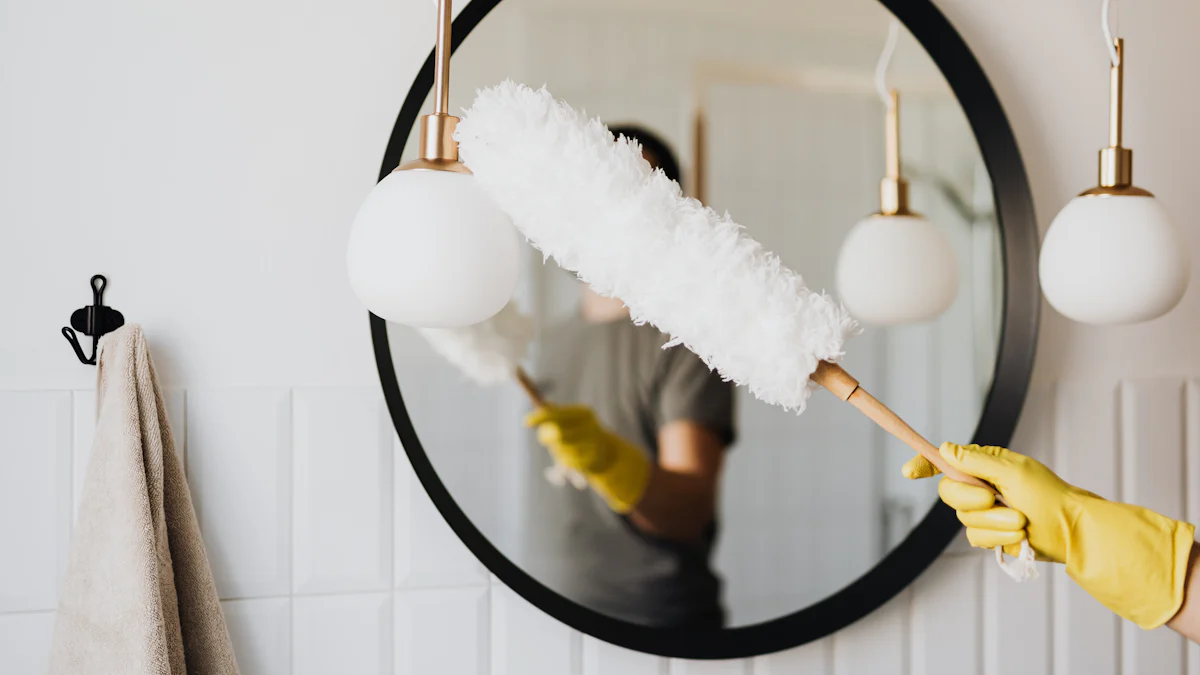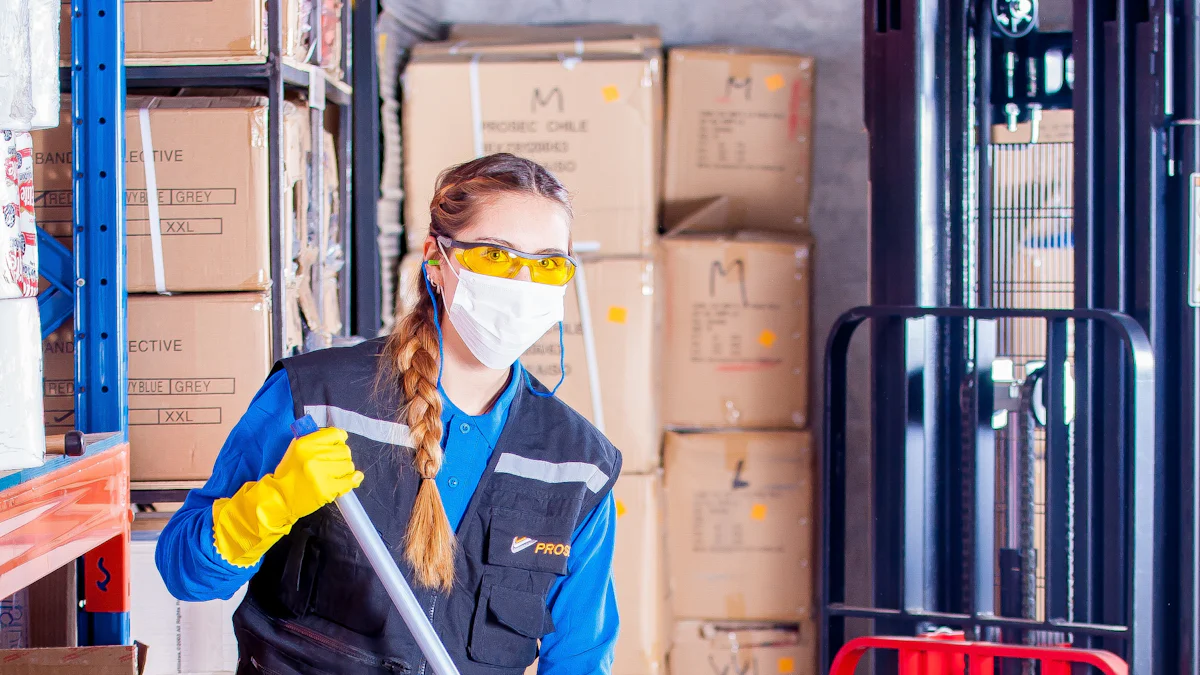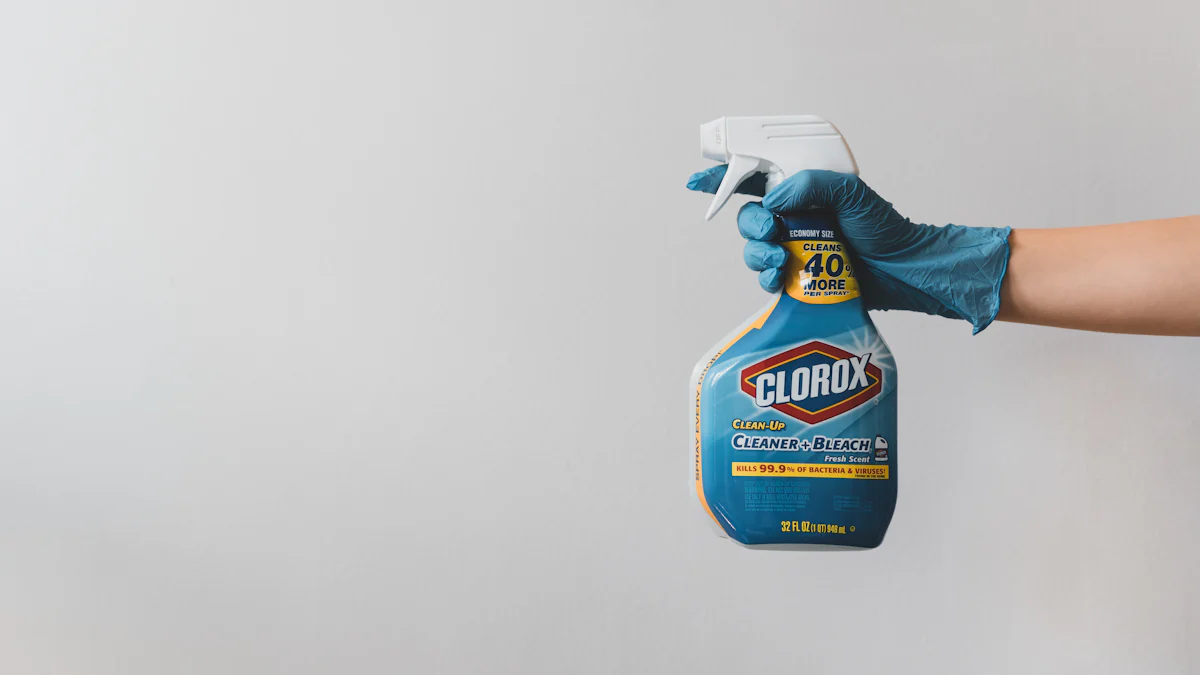
Cleaning plays a crucial role in preserving the performance and lifespan of your cvd coating epi susceptor. Residue buildup can compromise its efficiency, leading to inconsistent results. You must use non-abrasive tools and cleaning agents compatible with the coating material to prevent damage. Proper techniques ensure that debris is removed effectively without harming the surface. Regular maintenance not only keeps the susceptor functioning optimally but also reduces the need for costly replacements. By prioritizing cleanliness, you safeguard the integrity of your equipment and maintain reliable outcomes in your processes.
Key Takeaways
- Regular cleaning is essential to prevent residue buildup, which can degrade performance and lead to inconsistent results in CVD processes.
- Use non-abrasive tools and compatible cleaning agents to protect the delicate surface of your susceptor and extend its lifespan.
- Establish a cleaning schedule based on usage frequency, ideally cleaning after every 10–15 cycles, to maintain optimal equipment performance.
- Incorporate ultrasonic cleaning for stubborn residues to ensure thorough cleaning without damaging the coating.
- Always rinse with deionized water to avoid mineral deposits that can affect the susceptor's efficiency.
- Prioritize safety by wearing gloves and goggles when handling cleaning agents to protect yourself during the cleaning process.
- Conduct regular inspections for signs of wear or damage to address issues early and avoid costly repairs or replacements.
Importance of Proper Cleaning and Maintenance
Why Cleaning is Essential
Preventing performance degradation due to residue buildup.
Residue buildup on your susceptor can significantly impact its performance. Over time, deposits from chemical vapor deposition processes accumulate on the surface. These residues interfere with heat transfer and uniformity, leading to inconsistent results. Cleaning removes these unwanted materials, ensuring that your equipment operates at peak efficiency. By addressing residue buildup promptly, you maintain the integrity of your cvd coating epi susceptor and prevent unnecessary wear.
Ensuring consistent results in CVD processes.
Clean equipment is essential for achieving reliable outcomes in CVD processes. Residues left on the susceptor can cause uneven deposition, resulting in defects or variations in the final product. Regular cleaning ensures a smooth and uncontaminated surface, which promotes uniform coating application. When you prioritize cleanliness, you enhance the precision and consistency of your manufacturing processes. This attention to detail directly contributes to higher-quality results.
Long-Term Benefits of Maintenance
Extending the lifespan of CVD coating epi susceptors.
Proper maintenance plays a critical role in prolonging the life of your susceptor. Cleaning removes contaminants that can degrade the coating over time. When you use non-abrasive tools and compatible cleaning agents, you protect the delicate surface from damage. Routine care minimizes the risk of premature wear, allowing your equipment to perform effectively for an extended period. This approach maximizes the value of your investment.
Reducing the risk of costly replacements or repairs.
Neglecting maintenance can lead to severe consequences, including expensive repairs or replacements. Residue buildup and improper cleaning techniques can damage the susceptor, rendering it unusable. By implementing a regular cleaning schedule, you avoid these costly scenarios. Preventative care reduces the likelihood of unexpected downtime and ensures that your operations run smoothly. Investing time in maintenance saves you money in the long run.
Tools and Materials Needed

Recommended Cleaning Tools
Non-abrasive brushes or sponges to avoid scratching the coating.
Using the right tools is essential for cleaning your susceptor without causing damage. Non-abrasive brushes or sponges are ideal for removing loose debris and residue. These tools ensure that the delicate surface of the susceptor remains intact. Avoid using any rough or sharp materials that could scratch or compromise the coating. By selecting gentle cleaning tools, you protect the integrity of your equipment and maintain its performance.
Ultrasonic cleaning equipment for effective residue removal.
Ultrasonic cleaning equipment provides an advanced solution for tackling stubborn residues. This method uses high-frequency sound waves to create microscopic bubbles in a cleaning solution. These bubbles effectively dislodge contaminants from the surface without harming the coating. Ultrasonic cleaning is particularly useful for reaching areas that are difficult to clean manually. Incorporating this technology into your routine ensures thorough and efficient cleaning of your cvd coating epi susceptor.
Suitable Cleaning Agents
Solvents specifically designed for CVD coatings to dissolve residues.
Choosing the right cleaning agents is just as important as selecting the proper tools. Solvents formulated for CVD coatings are designed to dissolve residues without reacting with or degrading the coating material. These specialized solutions target contaminants while preserving the susceptor's surface. Always verify the compatibility of the solvent with your equipment to avoid unintended damage. Using the correct cleaning agents ensures effective residue removal and extends the lifespan of your susceptor.
Deionized water for thorough rinsing without leaving mineral deposits.
After applying cleaning agents, rinsing with deionized water is crucial. Regular tap water contains minerals that can leave deposits on the susceptor's surface, potentially affecting its performance. Deionized water eliminates this risk by providing a pure and residue-free rinse. It ensures that no chemical traces remain after cleaning, leaving the susceptor ready for use. Incorporating deionized water into your cleaning process enhances the overall effectiveness of maintenance.
Protective Gear
Gloves and safety goggles to handle chemicals safely and prevent exposure.
Safety should always be a priority when cleaning your susceptor. Gloves and safety goggles protect you from potential exposure to cleaning agents and residues. Gloves shield your hands from harmful chemicals, while goggles safeguard your eyes from splashes or fumes. Wearing protective gear minimizes the risk of accidents and ensures a safe cleaning process. Proper safety measures allow you to focus on maintaining your equipment without compromising your well-being.
Step-by-Step Cleaning Process

Preparation
Turn off and cool down the equipment completely before cleaning.
Before starting the cleaning process, ensure the equipment is turned off and has cooled down entirely. Working on a hot susceptor can lead to accidents or damage to the coating. Cooling the equipment prevents thermal shock, which could compromise the integrity of the cvd coating epi susceptor. Always prioritize safety and allow sufficient time for the equipment to reach room temperature.
Gather all necessary tools, materials, and protective gear.
Organize everything you need before beginning the cleaning process. This includes non-abrasive brushes, sponges, ultrasonic cleaning equipment (if applicable), suitable cleaning agents, deionized water, gloves, and safety goggles. Having all tools and materials within reach ensures a smooth workflow and minimizes interruptions. Proper preparation sets the stage for an efficient and effective cleaning session.
Cleaning Steps
Gently remove loose debris with a non-abrasive brush or sponge.
Start by carefully brushing away any loose particles or debris from the susceptor's surface. Use a non-abrasive brush or sponge to avoid scratching or damaging the coating. This initial step clears the surface and prepares it for deeper cleaning. Gentle handling is crucial to maintaining the susceptor's performance and longevity.
Apply the cleaning agent to dissolve stubborn residues effectively.
Apply a cleaning agent specifically designed for CVD coatings to tackle stubborn residues. Spread the solution evenly across the surface, ensuring it reaches all areas with buildup. Allow the agent to work for the recommended duration to dissolve contaminants effectively. Using the right cleaning agent preserves the coating while removing unwanted deposits.
Use ultrasonic cleaning equipment for deep cleaning (if applicable).
For more thorough cleaning, consider using ultrasonic cleaning equipment. This method employs high-frequency sound waves to dislodge residues from hard-to-reach areas. Place the susceptor in the ultrasonic cleaner, following the manufacturer's instructions. This advanced technique ensures a deep clean without compromising the delicate coating.
Rinse thoroughly with deionized water to remove any chemical residue.
After cleaning, rinse the susceptor thoroughly with deionized water. This step removes any remaining cleaning agent and prevents mineral deposits from forming on the surface. Deionized water ensures a residue-free finish, leaving the susceptor ready for use. Proper rinsing is essential for maintaining the equipment's functionality.
Drying and Inspection
Air-dry or use a lint-free cloth to ensure the susceptor is completely dry.
Dry the susceptor completely before reassembling or storing it. Allow it to air-dry in a clean environment, or use a lint-free cloth to speed up the process. Avoid using materials that could leave fibers or scratches on the surface. Ensuring the susceptor is dry prevents moisture-related issues during subsequent use.
Inspect for any remaining residue, scratches, or coating damage.
Perform a thorough inspection of the susceptor after drying. Check for any leftover residue, scratches, or signs of coating damage. Address any issues immediately to prevent further complications. Regular inspections help you maintain the integrity of the cvd coating epi susceptor and ensure optimal performance in your processes.
Maintenance Tips
Regular Cleaning Schedule
Establish a routine based on usage frequency, such as cleaning after every 10–15 cycles.
Creating a consistent cleaning schedule ensures your equipment remains in optimal condition. Base the frequency of cleaning on how often you use the susceptor. For most operations, cleaning after every 10–15 cycles is a practical starting point. This routine prevents residue buildup, which can compromise the performance of your cvd coating epi susceptor. Adhering to a regular schedule minimizes the risk of unexpected downtime and keeps your processes running smoothly.
Adjust the schedule based on the specific demands of your CVD process.
Every CVD process has unique requirements. Evaluate the specific conditions of your operation to determine if adjustments to the cleaning schedule are necessary. High-intensity or continuous-use processes may require more frequent cleaning. Conversely, less demanding applications might allow for longer intervals. Tailoring the schedule to your needs ensures the susceptor remains clean and functional without overburdening your maintenance routine.
Storage and Handling
Store CVD coating epi susceptors in a clean, dry environment to prevent contamination.
Proper storage plays a vital role in maintaining the integrity of your susceptor. Always store it in a clean and dry location to avoid contamination from dust, moisture, or other environmental factors. Contaminants can degrade the coating and reduce the efficiency of the susceptor. A controlled storage environment safeguards the equipment and ensures it is ready for use when needed.
Handle with care to avoid scratches, dents, or other physical damage.
Careful handling is essential to protect the delicate surface of the susceptor. Avoid dropping or mishandling it, as physical damage can compromise its performance. Use appropriate tools or supports when moving or installing the susceptor. Treating the equipment with care preserves the coating and extends its lifespan, ensuring consistent results in your CVD processes.
Monitoring for Wear and Tear
Regularly check for signs of coating degradation, cracks, or discoloration.
Frequent inspections help you identify potential issues before they escalate. Look for signs of coating degradation, such as cracks, discoloration, or uneven surfaces. These indicators suggest that the susceptor may no longer perform as expected. Early detection allows you to address problems promptly, preventing further damage and maintaining the quality of your operations.
Replace susceptors when wear compromises their performance.
When wear and tear significantly affect the susceptor's functionality, replacement becomes necessary. Continuing to use a damaged susceptor can lead to inconsistent results and increased costs. Replacing it at the right time ensures your processes remain efficient and reliable. Investing in a new susceptor protects the quality of your work and minimizes the risk of operational disruptions.
Common Mistakes to Avoid
Using Abrasive Tools or Harsh Chemicals
Avoid tools that can scratch or damage the CVD coating.
Using abrasive tools can severely harm the delicate surface of your CVD-coated susceptor. Scratches compromise the coating's integrity, leading to uneven performance and reduced lifespan. Always choose non-abrasive brushes or sponges designed for sensitive surfaces. These tools effectively remove debris without causing harm. Prioritize gentle cleaning methods to maintain the susceptor's functionality and appearance.
Do not use cleaning agents that react with or degrade the coating material.
Harsh chemicals can react with the CVD coating, causing irreversible damage. Some cleaning agents may strip away the protective layer or leave residues that interfere with performance. Use solvents specifically formulated for CVD coatings. These products dissolve residues without degrading the material. Always verify the compatibility of the cleaning agent with your equipment to ensure safe and effective cleaning.
Skipping Regular Maintenance
Neglecting cleaning can lead to residue buildup and performance issues.
Failing to clean your susceptor regularly allows residue to accumulate. This buildup disrupts heat transfer and coating uniformity, resulting in inconsistent outcomes. Over time, the residue hardens, making it more difficult to remove. Establishing a consistent cleaning routine prevents these issues. Regular maintenance keeps your equipment in optimal condition and ensures reliable results.
Irregular maintenance increases the risk of permanent damage and costly repairs.
Infrequent cleaning and inspections can lead to long-term damage. Residue buildup and undetected wear weaken the susceptor, eventually requiring expensive repairs or replacements. By neglecting maintenance, you risk operational downtime and increased costs. A proactive approach to care minimizes these risks. Routine upkeep protects your investment and extends the lifespan of your equipment.
Improper Drying or Storage
Storing susceptors while damp can lead to corrosion or contamination.
Moisture left on the susceptor after cleaning creates an ideal environment for corrosion. Contaminants from damp storage conditions can also degrade the coating. Always dry the susceptor thoroughly before storing it. Use a lint-free cloth or allow it to air-dry in a clean space. Proper drying prevents moisture-related damage and ensures the susceptor remains ready for use.
Mishandling during storage can cause physical damage to the coating.
Improper handling during storage can result in scratches, dents, or other physical damage. These issues compromise the susceptor's performance and reduce its lifespan. Store the susceptor in a designated, clean area free from potential hazards. Use protective covers or supports to prevent accidental impacts. Careful handling during storage preserves the coating and maintains the equipment's efficiency.
Proper cleaning and maintenance of your cvd coating epi susceptor ensure its optimal performance and durability. By selecting the right tools and following a structured cleaning process, you protect the equipment from damage and maintain its efficiency. Avoiding common mistakes, such as using abrasive materials or skipping regular care, prevents costly repairs and replacements. Consistent upkeep not only saves money but also guarantees reliable results in your operations. Prioritize these practices to extend the lifespan of your susceptor and achieve consistent success in your CVD processes.
FAQ
What are CVD-coated susceptors, and why do they need cleaning?
CVD-coated susceptors are components used in chemical vapor deposition (CVD) processes to support substrates during coating applications.
How often should I clean my CVD-coated susceptor?
The cleaning frequency depends on your usage. A general guideline is to clean the susceptor after every 10–15 cycles. However, if your process involves heavy usage or generates significant residue, you may need to clean it more frequently. Regular inspections can help you determine the optimal cleaning schedule for your specific needs.
Can I use regular cleaning tools and agents for CVD-coated susceptors?
No, you should avoid using regular cleaning tools and agents. Abrasive tools can scratch the coating, and incompatible cleaning agents may degrade the material. Always use non-abrasive brushes or sponges and solvents specifically designed for CVD coatings. These tools and agents ensure effective cleaning without causing damage.
Is ultrasonic cleaning necessary for maintaining CVD-coated susceptors?
Ultrasonic cleaning is not mandatory but highly recommended for stubborn residues or hard-to-reach areas. This method uses high-frequency sound waves to dislodge contaminants without harming the coating. It provides a deeper clean compared to manual methods and enhances the overall maintenance process.
Why is deionized water important for rinsing?
Deionized water is free from minerals and impurities that can leave deposits on the susceptor's surface. Using it ensures a residue-free rinse, which prevents performance issues caused by mineral buildup. Regular tap water may compromise the coating's integrity, so always opt for deionized water during the rinsing step.
What safety precautions should I take while cleaning?
Always wear gloves and safety goggles when handling cleaning agents and tools. Gloves protect your skin from harmful chemicals, while goggles shield your eyes from splashes or fumes. Ensure the equipment is turned off and completely cooled before starting the cleaning process to avoid accidents.
How can I prevent damage during storage?
Store your CVD-coated susceptor in a clean, dry environment to avoid contamination and moisture-related issues. Use protective covers or designated storage areas to prevent scratches, dents, or other physical damage. Proper storage practices preserve the coating and maintain the susceptor's performance.
What are the signs that my susceptor needs replacement?
Look for visible signs of wear, such as cracks, discoloration, or uneven surfaces. If the coating shows significant degradation or the susceptor no longer performs as expected, it may be time for a replacement. Regular inspections help you identify these issues early and avoid operational disruptions.
Can skipping regular maintenance affect my CVD processes?
Yes, neglecting maintenance can lead to residue buildup, which disrupts heat transfer and coating uniformity. Over time, this can cause inconsistent results, equipment damage, and costly repairs. Regular cleaning and inspections ensure reliable performance and extend the lifespan of your susceptor.
Are there common mistakes to avoid during cleaning?
Yes, avoid using abrasive tools or harsh chemicals that can damage the coating. Do not skip drying the susceptor thoroughly, as moisture can lead to corrosion or contamination. Mishandling during storage or cleaning can also cause physical damage. Following proper techniques and using the right tools minimizes these risks.

No comments:
Post a Comment